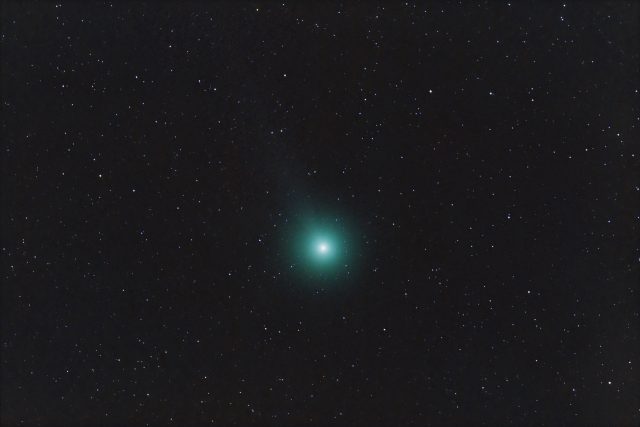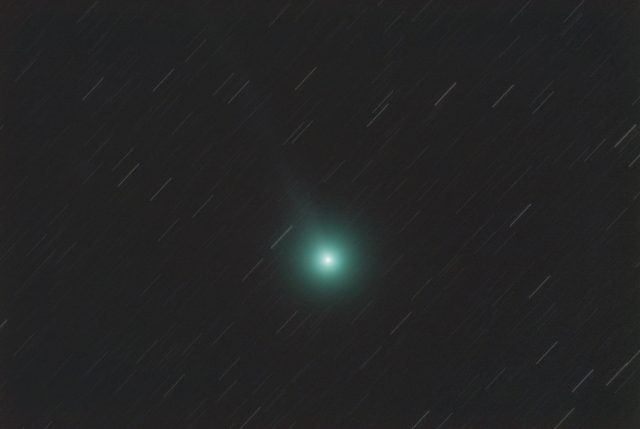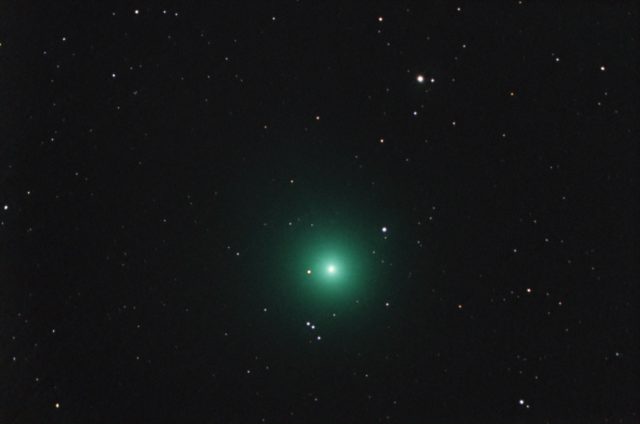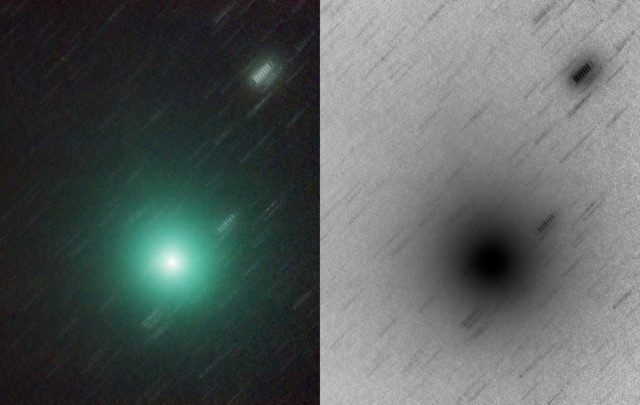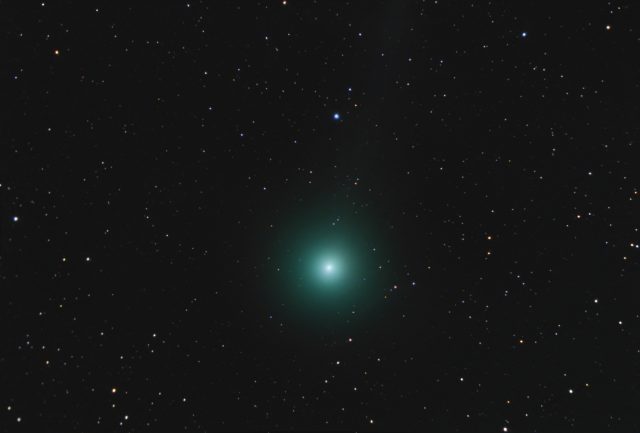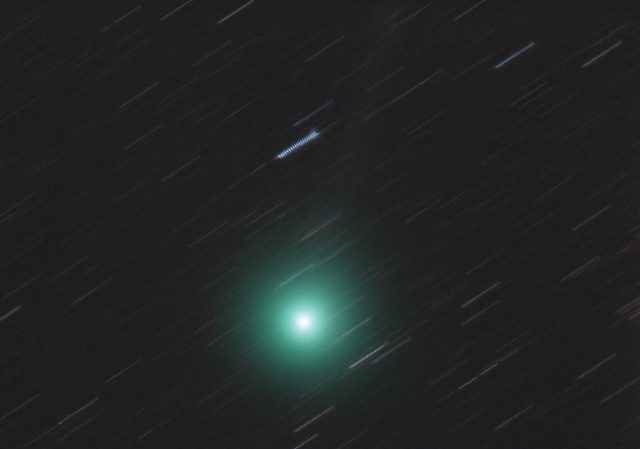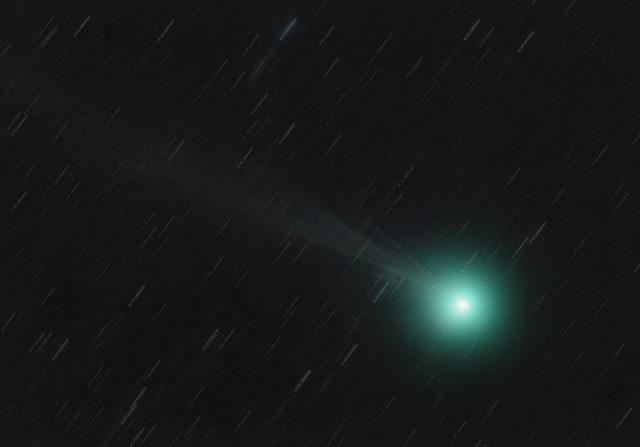 Lovejoy Q2 on Jan 7, 2015, 02:33 UT (Jan 6, 2015, 8:33 PM CST). 16×120 sec @ ISO 1600, TV-85 at F/5.6, Canon T3 DSLR (stock.)
Lovejoy Q2 on Jan 7, 2015, 02:33 UT (Jan 6, 2015, 8:33 PM CST). 16×120 sec @ ISO 1600, TV-85 at F/5.6, Canon T3 DSLR (stock.)
Category Archives: Comets
Comet C/2014 Q2 (Lovejoy) on Jan 6, 2015
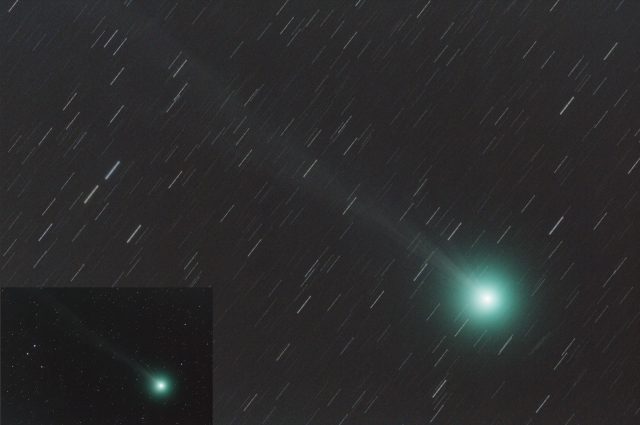 A quickie processing job on data taken on Jan 6, 2015 at 02:53 UT (Jan 5, 8:53 pm CST.) This is 36×45 sec ISO 1600 sub-images taken with a Televue TV-85 at F/5.6 and a stock Canon T3 with no LPS filters in the image train.
A quickie processing job on data taken on Jan 6, 2015 at 02:53 UT (Jan 5, 8:53 pm CST.) This is 36×45 sec ISO 1600 sub-images taken with a Televue TV-85 at F/5.6 and a stock Canon T3 with no LPS filters in the image train.
A very bright moon was out while taking these shots, but it still shows a nice tail. Just think how good it will be when there is no moonlight to hinder the view!
Edit: This image appears at the Federalist online news site in a story about the comet and is available by clicking here: Catch A Comet! Lovejoy Is Lighting Up The Skies
C/2014 Q2 (Lovejoy) on Dec 31, 2014
Comet Lovejoy (C/2014 Q2) – Christmas 2014
Comet Lovejoy (C/2014 Q2) Dec 17, 2014
Finally rising high enough to image where I live, Lovejoy Q2 is already putting on a show. It will be getting even brighter than it is now towards X-mass and the first part of January.
Date: Dec 17, 2014, 07:23 UT
Telescope: C8 w/FR/FF at F/6.3 or 1260mm f.l.
Camera: modified Canon T3
Exposure: 20 x 180 sec @ ISO 3200.
Comet Q2 – Big and Bright

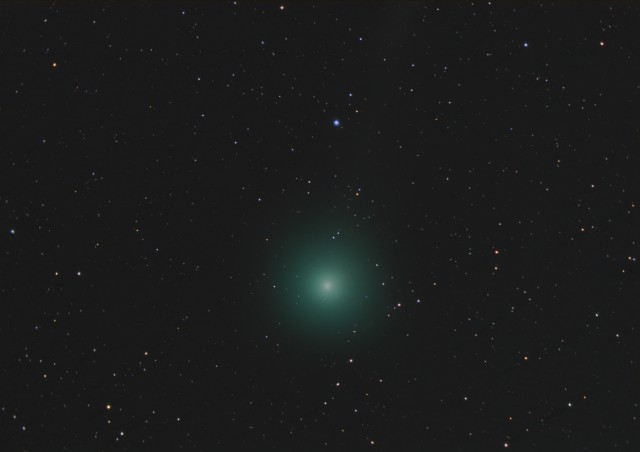
Finally, a clear night and no trees obstructing the view! Comet C/2014 Q2 (Lovejoy) was out and easily spotted in binoculars. I did some 3 minute exposures and they showed it as a large bright coma and a very faint tail. The light and dark images above are a quick processing job on the sub-images I obtained. Below is a star streak version of the same data that shows the extent of the coma better.
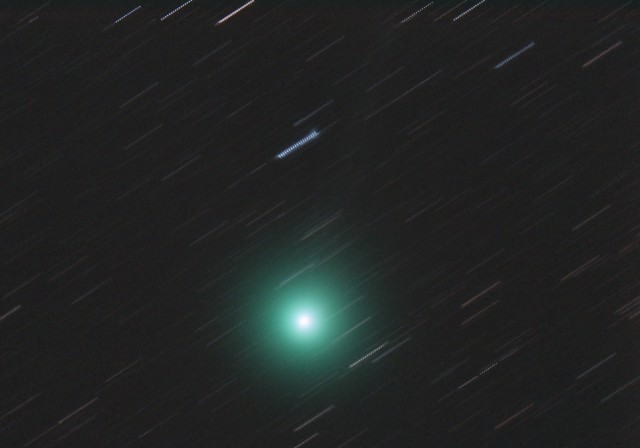
Here is all 20 sub-images I managed to shoot in a quick additive stack. The tail is there but very faint. There was some smearing of the pseudo-nucleus with 3 minute exposures, but I needed to go that long to get a bit of that faint tail.
Comet C/2014 Q2 (Lovejoy) Animation
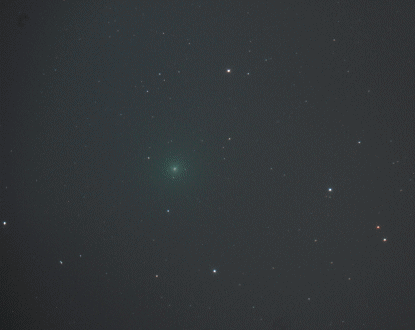
Well, I got my first images of Comet Lovejoy, C/2014 Q2, but unfortunately, they were all shots that had tree branches in them. The comet was still too low for my location at the time the shots were taken. I have since chopped the trees down that were causing this mess, so hopefully I’ll get something better in the near future. The above animation was all I could salvage from the images.
Two Globular Clusters and a Comet
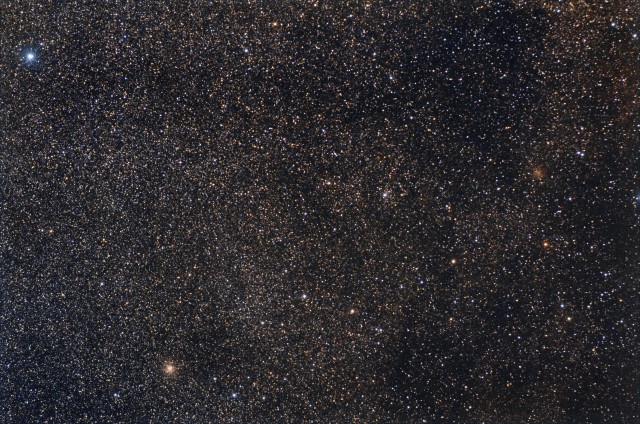
Two globular clusters in Aquila and a very tiny comet are visible in this image. I only wanted to check the size of Comet Jaques on this night, since I missed imaging it when it was at it’s best. I regret that I did not get a chance to shoot it back then, but at least I finally got to see it.
Comet Siding Spring Meets Mars
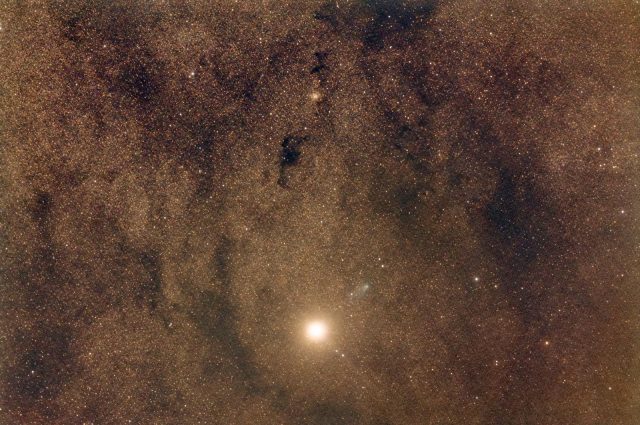
Update October 20, 2014: The above image is an update with more time added. Compare it to the image below which was made with only 20 minutes of data shot at ISO 6400 (20×60 sec sub-images.) I took an additional 30 minutes of 3 minute sub-images at ISO 1600 and added it in, so the combined total is 50 minutes.
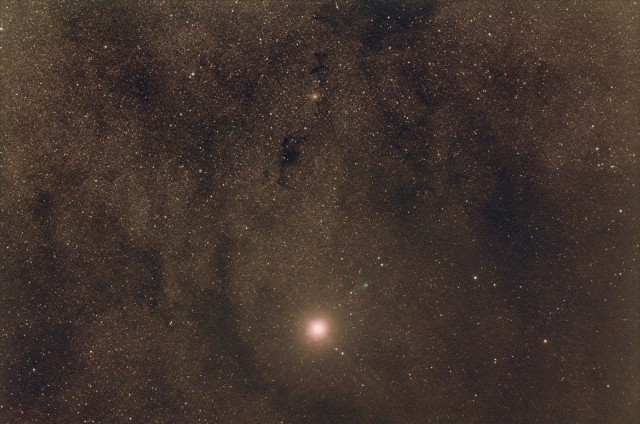
Well, the big comet encounter of the year took place tonight, Oct 19, 2014 and Mars and Comet Siding Spring (C/2013 A1) both survived. LoL. Seriously, it was a very close encounter if you had darkness when it was closest. Here in southern Louisiana, it took place during daylight, so I had to catch it after closest approach as C/2013 A1 was bidding Mars farewell.
I had a strange night with some issues, but I managed to get some decent data and also lucked out with some good weather for this event. This image is from the first set of images I took and it is a composite of comet-only processed and star background processed image stacks. The comet moved a good distance in the twenty-five minutes it took to get the sub-frames, so I had to isolate it with different alignment and stacking techniques than I use for normal deep-sky images.
C/2013 A1 – Comet Siding Spring
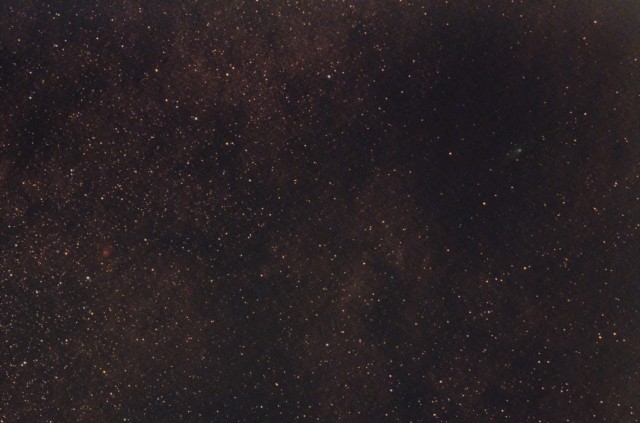
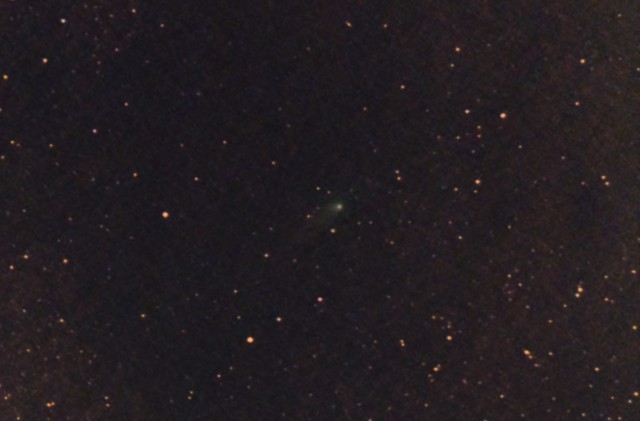
Well, I finally managed to catch that small comet that is about to side-swipe Mars. It was a last minute effort and I caught the comet late and a little too close to the horizon. It was so low, that I had to throw out the last six sub-images because they were way too red. At that point, the comet was only 2 degrees above the horizon. That’s probably the lowest angle I ever tried to image something.
The actual close approach to Mars will occur on October 19th, 2014. Hopefully, I’ll get a chance to shoot it again at that time. It’s a little runt comet, but at least it is newsworthy. lol 😀
For this image, I had to travel a few miles from home to find a western horizon free of obstructions, since from my backyard it is impossible to see. I ended up staying there most of the night since the sky was so nice.

